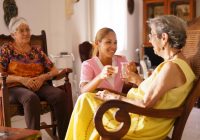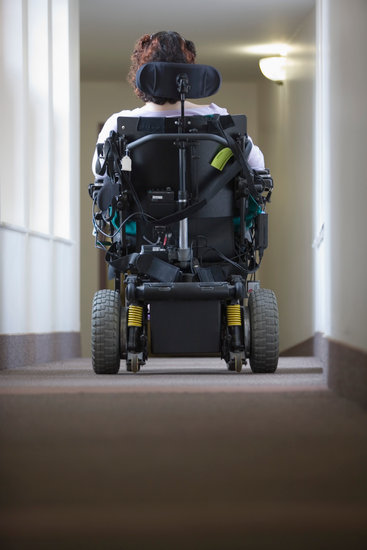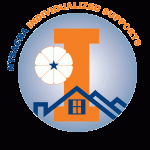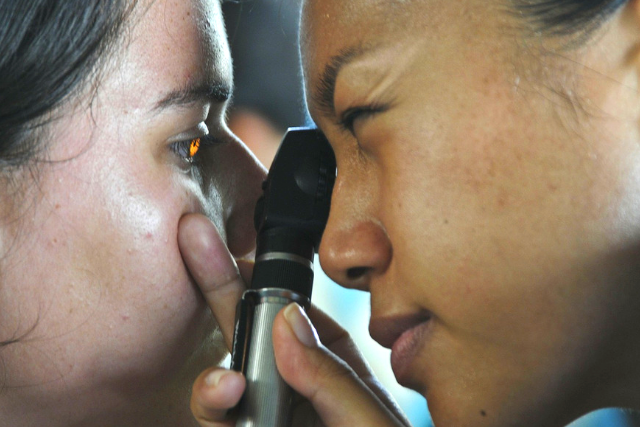Emotional Health: In Nursing, What to Do When a Resident Feels Scared, Anxious or Excessively Worried
The nursing mission would mandate that, when appropriate, you should help the resident understand that fear and worries are appropriate responses in some situations and can even be life saving!
They serve a purpose in life, and become a problem only when they begin to interfere with one’s daily functioning. Here is a check-list that you can go through with the resident to help him/her get a handle on worries and fears.
1.Rule out underlying physical causes.
If the resident is experiencing excessive symptoms such as headaches, stomach upsets, rapid breathing and fast heart rate, have a physician rule out underlying medical causes that can mimic anxiety.
Some medications may produce side effects that are experienced as physical symptoms of anxiety. Discuss this with the resident’s health care provider.
Be aware of the resident’s daily caffeine consumption. Too much can cause symptoms of anxiety or make existing symptoms worse.
- Check out the resident’s thoughts.
When s/he feels afraid or anxious, take a moment to ask him/her what s/he is afraid of. Ask the resident to what extent this perception matches reality. How realistic is it that the worst possible outcome will actually occur? Search for evidence and see if it supports the resident’s assumptions.
When the resident feels overwhelmed by waves of fear and worry, “Thought Stopping” is one way to help him/her deal with it.
Teach the resident to substitute the fearful thought with the word “STOP” and visualize a traffic sign if s/he needs to.
Many people find prayer useful in helping them cope with their worries. If prayer is a part of the resident’s tradition, it can serve as yet another way to still the mind when worries are rampant.
- Slowing down the resident’s bodily response to worries can be helpful.
In nursing, one can teach the resident to pay attention to his/her breathing when s/he feels anxious or fearful. Teach and show him/her how to take deep, full and slow breaths that will help to return a sense of calm.
- Exercising as a way to ease tension can help.
Teach the resident that engaging in physical activity can help diffuse tension and also serve as a momentary distraction from it.
This is especially useful if s/he finds that thought stopping and slow breathing are not enough to help him/her feel calmer.
Physical activity need not be strenuous for it to have positive effects. Activity can include anything from walking, to vacuuming, to knitting, to dancing.
Teach the resident how to modify the movements in order to fit them within his/her range of abilities. With a little bit of thought and creativity, it is possible to come up with activities that can be adapted to his/her situation.
- Develop a response plan that you and the resident can put into action when needed
If the feelings persist, help the resident “map” their occurrence. Are there particular situations where s/he is more prone to such feelings and reactions?
The more one knows about his/her pattern of anxiety or worry, the better equipped one will be to overcome it.
Once a pattern has been identified, you and the resident can come up with a coping plan, which includes calming self-talk, challenging negative assumptions and taking deep breaths. These can be helpful alone, or used in combination.
Remind the resident that the next time s/he has these feelings, to remember the plan and ask for help to follow it.
The regular practice of meditation can be useful in this respect, as it helps to slow down rapid breathing and fast heart beats. It also helps to clear the mind, which often gets worked up when a person is worried.
- Tap into resident strength in times of real need
Teach him/her to remember that many times the worst things we expect to happen never do; and if something terrible does happen, it is quite likely that s/he will cope and go on. People have untapped reserves of strength that they are generally not aware of.
Finding a balance between reality and worries.
Life is to a certain extent uncertain, and we have to accept that. In nursing, one knows that the key to managing anxiety is to find the balance between reality, fears and worries.
Teach the resident to stay focused on this balance and not to give in to excessive negative thoughts.
- Seeking help
If the problem persists and is severe enough to disrupt his/her normal functioning, nursing protocol would require that you make a referral to a mental health professional or physician.
Effective treatment in the form of medication and cognitive therapy can be helpful in bringing relief.
If you or one of your family member is disabled and in need of an easy and portable ways to shower, check out the products and models on Fawssit’s website.








 Electroencephalography (EEG), or brain-wave detecting technology, isn’t new. Scientists have been working with it for years. The simplest explanation of how EEG works is that a device, usually a cap or hat, that has been wired with sensors detects a person’s brain waves and feeds them to a computer. The computer instantly analyzes the data and applies to the device in question.
Electroencephalography (EEG), or brain-wave detecting technology, isn’t new. Scientists have been working with it for years. The simplest explanation of how EEG works is that a device, usually a cap or hat, that has been wired with sensors detects a person’s brain waves and feeds them to a computer. The computer instantly analyzes the data and applies to the device in question. The Weizmann Institutes scientists in Israel have published a study that shows that people with “locked in” syndrome and others in similar situations can communicate and control a wheelchair by sniffing.
The Weizmann Institutes scientists in Israel have published a study that shows that people with “locked in” syndrome and others in similar situations can communicate and control a wheelchair by sniffing. NYSACRA’s strategic plan calls for exploration of new service paradigms as part of its overall goal to shape the industry, by helping agencies to develop individualized services and supports. NYSACRA participates in a variety of activities to help make quality, customer-directed supports available to more people with developmental disabilities.
NYSACRA’s strategic plan calls for exploration of new service paradigms as part of its overall goal to shape the industry, by helping agencies to develop individualized services and supports. NYSACRA participates in a variety of activities to help make quality, customer-directed supports available to more people with developmental disabilities.

 Dogs can be trained to perform a multitude of tasks to assist their disabled owners. Many trainers rescue mixed-breed shelter dogs.
Dogs can be trained to perform a multitude of tasks to assist their disabled owners. Many trainers rescue mixed-breed shelter dogs.
 While the bond between a service dog and its owner may become deep, others should remember the dog is a working animal and must be treated as such. Their job is to remain focused on their owner’s needs and safety, and any distraction could endanger that person. Service dogs, however lovable, should never be fed, petted, or talked to without their owner’s permission. They are highly skilled, on-duty, working dogs.
While the bond between a service dog and its owner may become deep, others should remember the dog is a working animal and must be treated as such. Their job is to remain focused on their owner’s needs and safety, and any distraction could endanger that person. Service dogs, however lovable, should never be fed, petted, or talked to without their owner’s permission. They are highly skilled, on-duty, working dogs. Attending a meeting on behalf of a disabled individual is a daunting task. Annual meetings are held to determine services, reevaluate educational goals, discuss results of evaluations or to decide on a course of treatment. These meetings are often very hard on caregivers (parents) as they can directly impact the course of both the lives of the individual and caregiver.
Attending a meeting on behalf of a disabled individual is a daunting task. Annual meetings are held to determine services, reevaluate educational goals, discuss results of evaluations or to decide on a course of treatment. These meetings are often very hard on caregivers (parents) as they can directly impact the course of both the lives of the individual and caregiver. Meditation has been proven in hundreds of unrelated scientific studies across the globe to have significant benefits to health, happiness, learning, creativity, and elimination of stress, anger, and substance abuse.
Meditation has been proven in hundreds of unrelated scientific studies across the globe to have significant benefits to health, happiness, learning, creativity, and elimination of stress, anger, and substance abuse.